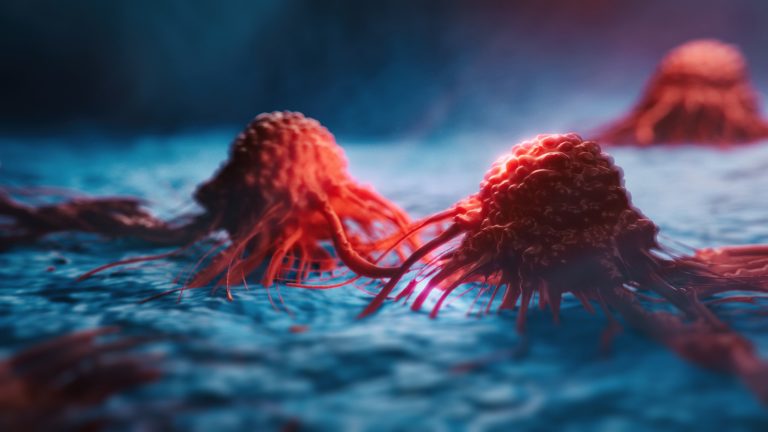
High levels of the inflammatory immune biomarker interleukin (IL)-33 can trigger abnormal cell growth and division in skin and pancreatic cells, shows research from Massachusetts General Hospital.
Chronic inflammation is known to be linked to a number of different cancers including skin, colon and pancreatic cancer. IL-33 is mostly known for its link with various inflammatory conditions including asthma, hayfever, endometriosis and allergies in general. However, it’s link to cancer was less clear.
“Previous studies have provided conflicting views of IL-33’s role in cancer development. The IL-33/ST2 axis has been shown to promote intestinal tumorigenesis and metastasis of colorectal cancer, suggesting that IL-33 plays a tumor-promoting role in the colon. However, these findings have been countered by evidence that IL-33 inhibits colorectal tumor growth, suggesting a tumor suppressing role instead,” write Shawn Demehri, M.D., Ph.D., a clinician and researcher at the Mass General Cancer Center, and colleagues in The EMBO Journal.
Demehri and his team previously discovered that levels of IL-33 are high in some cancer patients, particularly those with skin or pancreatic cancer. To assess how this inflammatory protein could drive cancer in these patients, the researchers observed the cellular action of IL-33 in epithelial cell lines from the skin and pancreas and also in a mouse model.
SMAD proteins liaise with the transforming growth factor (TGF)-beta family of proteins to regulate cell development and growth. Defects in SMAD signalling can impact TGF-beta function and result in abnormal cell development and cancer.
Using RNA and ChIP sequencing, the researchers found that IL-33 can cause repression of the SMAD6 protein by binding to its transcription factor – RUNX2 in the cell nucleus. This prevents RUNX2 from binding to SMAD6 and suppresses its expression. This inhibition led to uncontrolled cell division in the skin and pancreatic cell lines in the lab and in the animal model.
Notably, the researchers found that blocking the action of IL-33 was able to stop the cell proliferation in the cell lines and stopped the increase in epidermal cells and development of skin cancer in the mouse model.
“Our research has led to the discovery of a new mechanism by which immune factors can cause cancer development, and our findings point to a novel target for cancer prevention in chronic inflammation,” commented Demehri.
“The novel cell-autonomous effect of IL-33 in cancer cells suggests an innovative therapeutic path to blocking cancer development in chronic inflammation by targeting the IL-33/SMAD signaling axis with small molecules instead of antibodies against IL-33 cytokine,” suggest the authors.
This is not the first time SMAD proteins have been linked to cancer development. SMAD4 is inactivated in about half of all pancreatic cancers. But it is the first time the action of IL-33 in the nucleus has been linked to SMAD protein activity.
“IL-33 is mostly known as an epithelium-derived alarmin cytokine in allergic diseases and cancer,” write the authors.
“We demonstrate that the N-terminal domain of IL-33, which interacts with RUNX2, plays an essential role in nuclear IL-33’s regulation of SMAD signaling pathway. Thus, our discovery of IL-33 nuclear function in epithelial cells of skin and pancreas provides novel insights into the pathogenesis of cancer and inflammation in these organs.”













